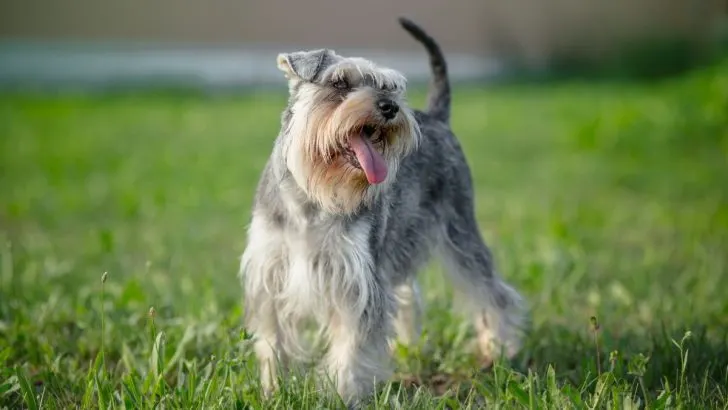Miniature Schnauzers are considered a favorite breed worldwide, renowned for their adorable appearance, vigorous nature, and strong adaptability.
They were downsized from Standard Schnauzers and were used as farm dogs to great success, either for ratting or as a watchdog.
One of the most attractive attributes is the various shades of color that can be found in this dog breed.
This breed has a beard and eyebrows as part of its looks; the feature characteristic of the breed makes its looks unique and is heightened by various coat colors.
Today, we will dive deep into all those body coat colors. In this detailed Miniature Schnauzer color guide, we discuss the AKC standard colors for the breed and those that are not.
This article will discuss the various colors of Miniature Schnauzers both from a genetic perspective and in terms of standards.
As a breeder, future owner, or enthusiast, it is vital to know all the rare colors of Miniature Schnauzers.
Standard Colors of Miniature Schnauzers
Before we start, what does it mean for a dog breed color to be considered standard?
When the AKC accepts a dog’s breed color, it is considered a standard color of that particular breed according to the AKC breed standards.
Breed standards are detailed descriptions of the breed’s ideal temperament characteristics and look, including acceptable coat color.
AKC conformation events can show the accepted color, as dogs are judged by the AKC standards based on how they conform to their standards.
Breeders, on the whole, aim to produce dogs that meet these AKC standards since this will improve their reputation and the appeal of their puppies.
The breed standard accepted by the American Kennel Club (AKC) and other major canine organizations divides coat colors into three main groups: salt and pepper, black, and black and silver.
1. The Salt And Pepper Miniature Schnauzer
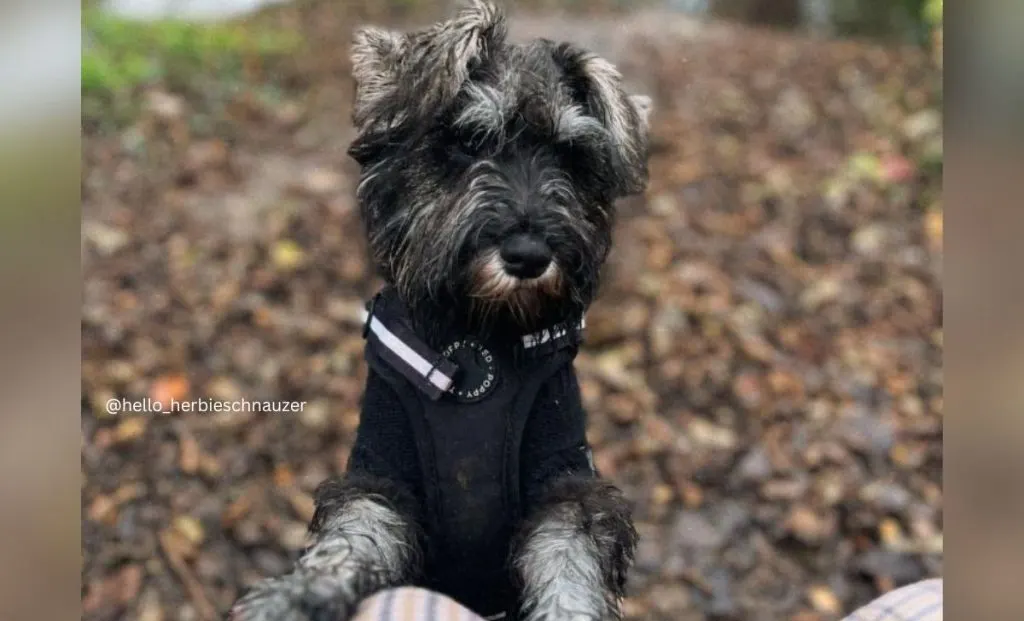
Salt and pepper are the most common and classic color patterns in the Miniature Schnauzer.
The result of banded hairs is the “peppered” appearance of the coat, created by different colored strands of hair segments.
The base coat is dark gray to silver, with a mix of black and white body hairs. The salt and pepper coloration arises from an interaction between the agouti gene at the A locus and a dominant black gene at the K locus.
Regular grooming is needed to keep the coat’s texture and appearance. Trimming and stripping are major if any coat matting is to be avoided and the coat is to be kept in good health.
2. The Black Miniature Schnauzer
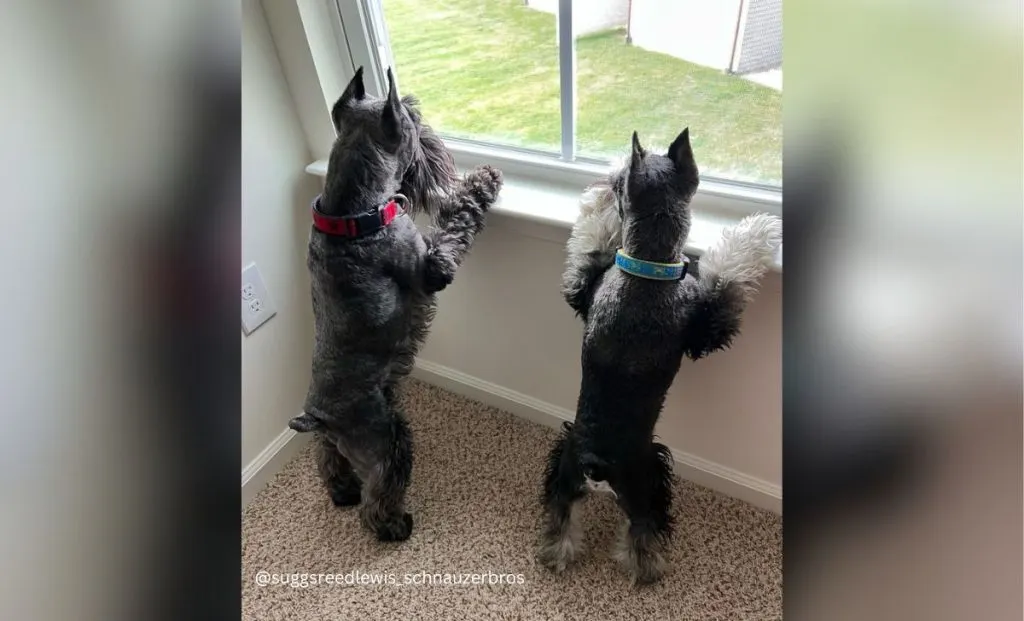
A solid black Miniature Schnauzer is striking and elegant. They have a solid black body, black pads, a black nose, and black eyes.
This is not a common color among dog coats but is preferred for its slick, uniform appearance.
The solid black bodies show when the dominant black gene’s K locus manifests without color dilution or agouti influences.
Black Schnauzers need regular grooming to keep the shining coat free from dirt particles.
These dogs adore digging, and their bodies often become dirty, so regular bathing and combing are vital.
3. The Black And Silver Miniature Schnauzer
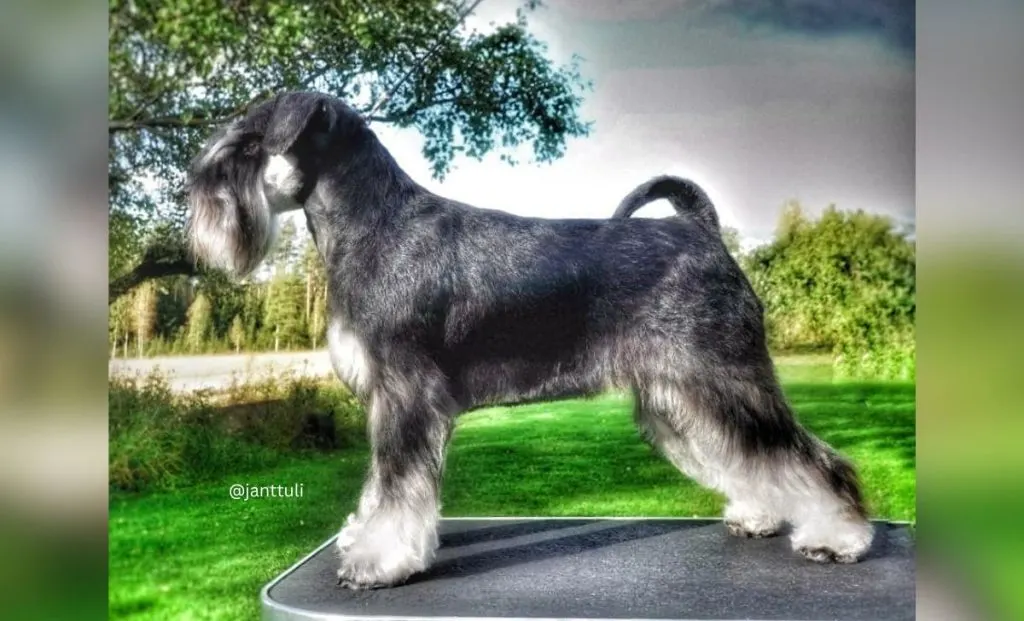
The more high-spirited definition comes with the contrast between base color and marking.
These dogs should have a black undercoat with beautiful silver color markings on the eyebrows, muzzle, chest, legs, and under the tail.
The genetics of this color is the same dominant black gene (K locus) as the black Schnauzer, but other modifier genes regulate the specific patterns.
Grooming a black and silver Schnauzer is like grooming a black Schnauzer; keep the coat vibrant and well-defined.
Non-Standard Colors of Miniature Schnauzers
We explained what it means when a color is considered a standard in the breed, but what about those out of the standard?
A dog breed color that the AKC does not recognize denotes that color is not standard for that breed, meaning it is a fault in the dog’s appearance.
While dogs with these unaccepted colors can be registered with AKC, they cannot compete in conformation shows.
These make these colors less desirable within the breeding community, and dogs with these colors may be excluded from breeding programs designed to produce dogs of show quality.
More importantly, this does not affect the dog’s eligibility to compete in other AKC events, such as agility, obedience, or any other performance sports, where the dog’s abilities and temperament are more important than its looks.
Besides the acknowledged standard colors, Miniature Schnauzers have several non-standard colors that are beautiful to see.
4. The White Miniature Schnauzer
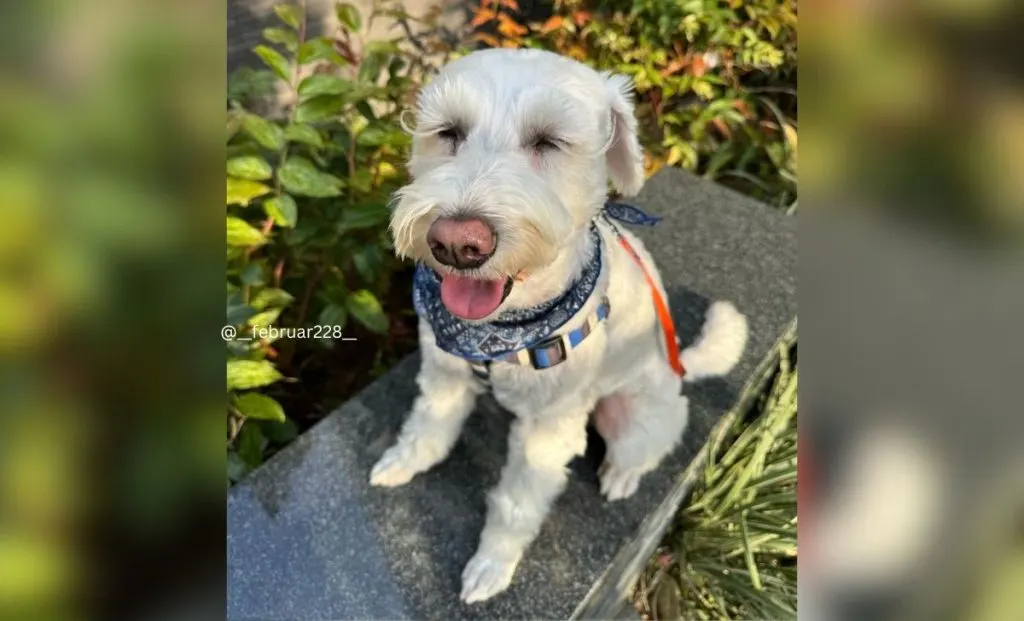
White Miniature Schnauzers may be one of the rare appearances in such a charming dog.
This color results from masking other colors by a recessive gene, causing a pure white coat with a white mask featuring distinct white eyebrows.
They can face several prejudices in the show ring but are beloved for their unique look. Due to this white coat, there is a need for careful grooming to keep it free from dirt and stains.
5. The Parti Colored Miniature Schnauzer
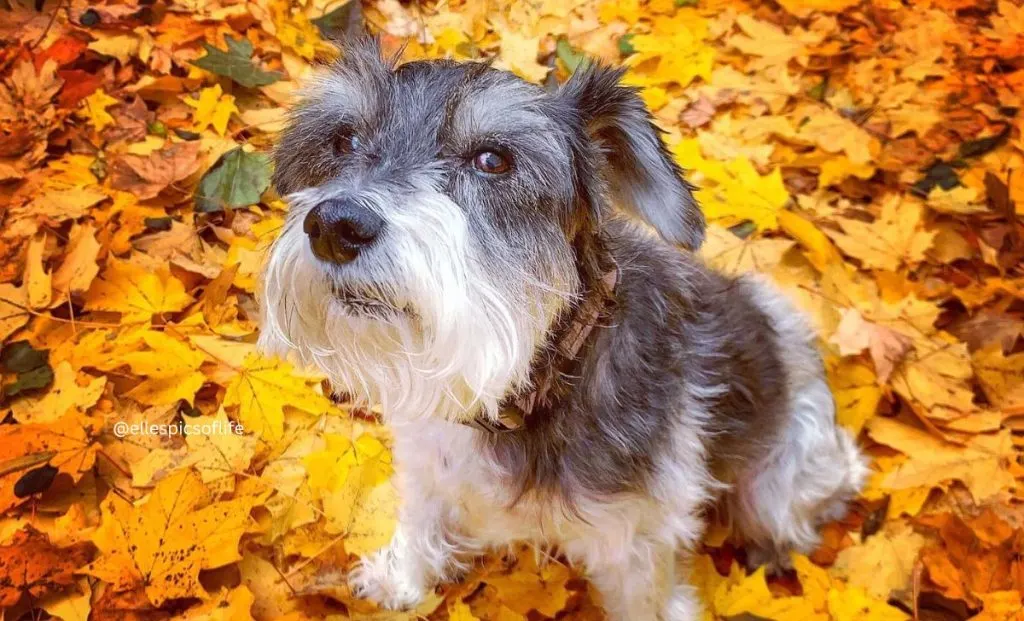
The parti Schnauzers are a distinctive variation of the Miniature Schnauzer breed, characterized by their unique coat patterns and colors.
These dogs exhibit a two-tone or multi-tone coat with large patches of solid white coat alongside another color.
Common parti colors include black and white, where the dog’s coat features a striking contrast between deep black and pure white colored patches, and liver and white, showcasing a combination of rich brown and white.
Other variations include liver parti, liver pepper parti, black parti, white parti, salt and pepper parti, liver & tan parti.
Each Miniature Schnauzer with a parti coat has a unique parti pattern, making them especially eye-catching and sought after by enthusiasts.
Their distinct appearance, combined with the Miniature Schnauzer’s well-known friendly and spirited personality, makes these dogs a popular choice for pet owners.
Parti Schnauzers are not accepted within the breed standard, but they are pretty attractive due to their varieties and look strikingly different.
Regular grooming helps to enhance this feature and maintain the clarity and contrast of their unique coat patterns.
6. The Liver Or Chocolate Miniature Schnauzer
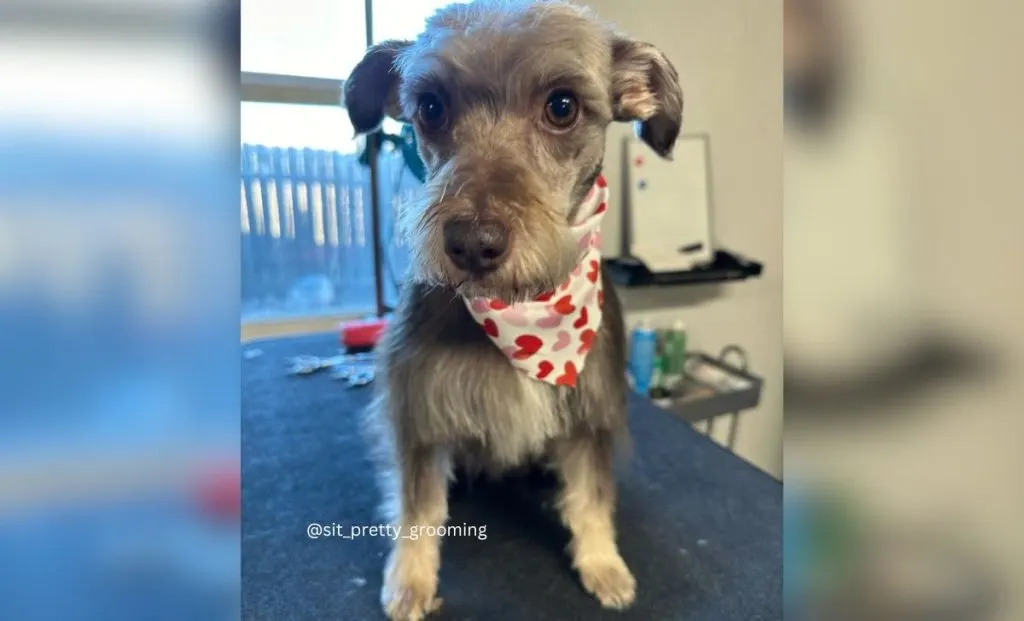
Liver or chocolate Miniature Schnauzers are defined by a deep, rich brown coat going from dark chocolate to a paler liver color.
This is because the B locus does not have a dominant gene but a recessive one, modifying the black to brown.
Although not an officially recognized color under most major breed standards, liver Schnauzers have become very popular because of their unique look.
Grooming a liver Schnauzer is the same as grooming any other—regular appointments are needed to retain the health and shine of the coat.
7. The Merle Miniature Schnauzer
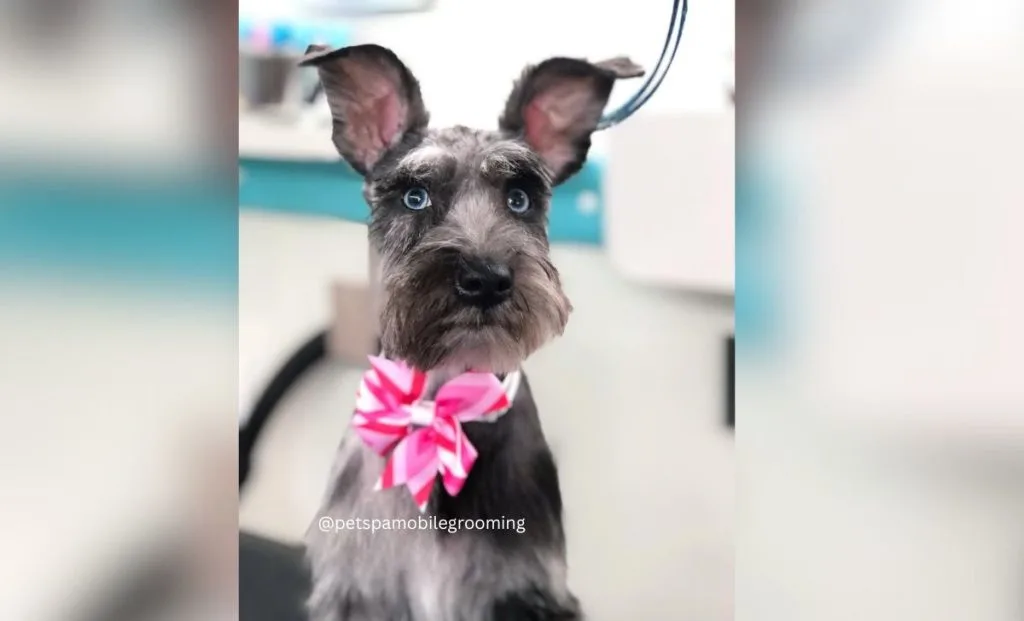
Merle in Miniature Schnauzers is seen in dogs with combined light and dark-colored patches.
The Merle gene changes the distribution and concentration of pigment in the coat and the eyes, often resulting in blue-eyed dogs.
More on the controversial side in coloration for Miniature Schnauzers because the gene is known to have adverse health effects, particularly on hearing and vision abilities; Merle Schnauzers need meticulous care.
An important note is to be careful of a breeder that uses this color as a selling point.
8. The Blue Miniature Schnauzer
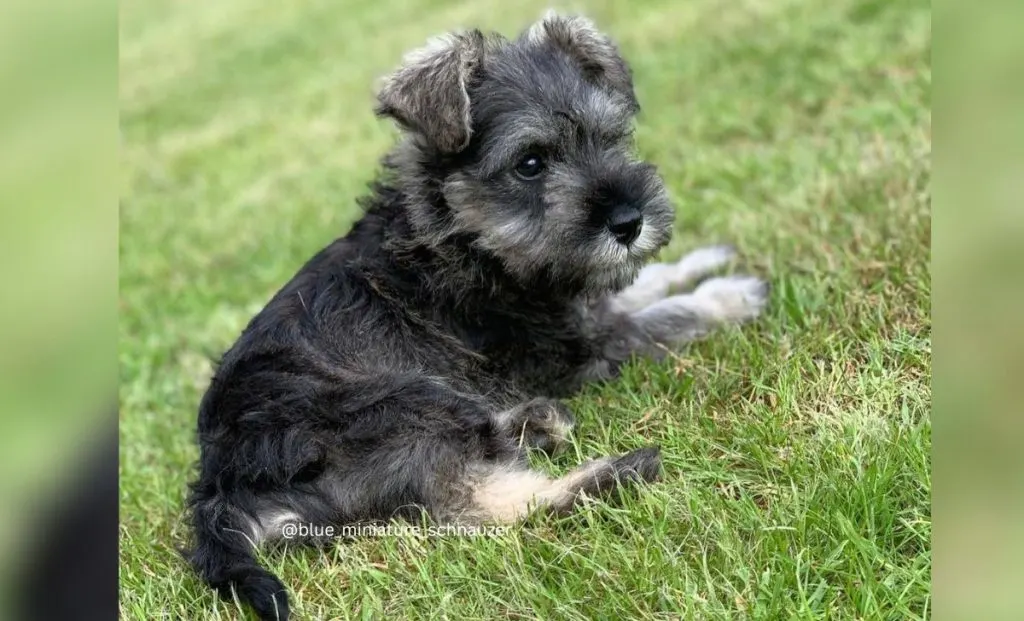
The Blue Miniature Schnauzer shows off a striking gray-blue coat, which is a result of a unique blend of blue and gray pigments.
This sophisticated and chic shade is hypoallergenic, requiring regular grooming to maintain its vibrant appearance and prevent tangling.
The blue hue adds an elegant appeal to this already charming breed.
9. The Wheaten Miniature Schnauzer
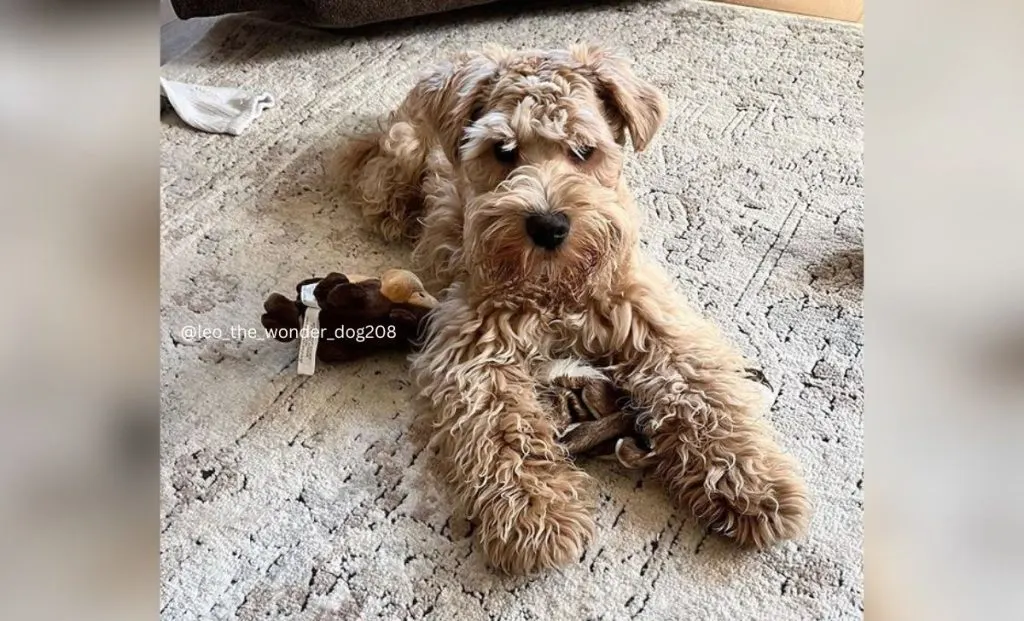
Wheaten is one of the rarer colors within the coat color set of the Miniature Schnauzer, but it’s probably also one of the most noticeable ones.
It is of pale cream to a richer, more golden color, much like the color of ripe wheat, from which comes the term “Wheaten.”
This wheaten coat is treasured among breed enthusiasts thanks to the unique appearance added to the Miniature Schnauzer breed, making it look elegant and charming.
Wheaten Miniature Schnauzer pups are born with a darker coat that gradually lightens as the dog ages.
In some cases, this lightning can be pretty drastic, with the final adult color not becoming fully apparent until the dog is at least a year of age or even older.
The slow lightening of color could make it quite mysterious to guess what the final coat’s shade would be, an added attraction and special uniqueness for wheaten-colored pups.
Texturing of the coat should be expected to be wiry and dense, much like that of a Miniature Schnauzer.
Grooming will be necessary to ensure that the coat remains healthy and mat-free.
While very attractive aesthetically, the Wheaten coat is similar to the other coats in the breed and will also need the same amount of care to maintain cleanliness, health, and tangle-free status.
10. The Black And Tan Miniature Schnauzer
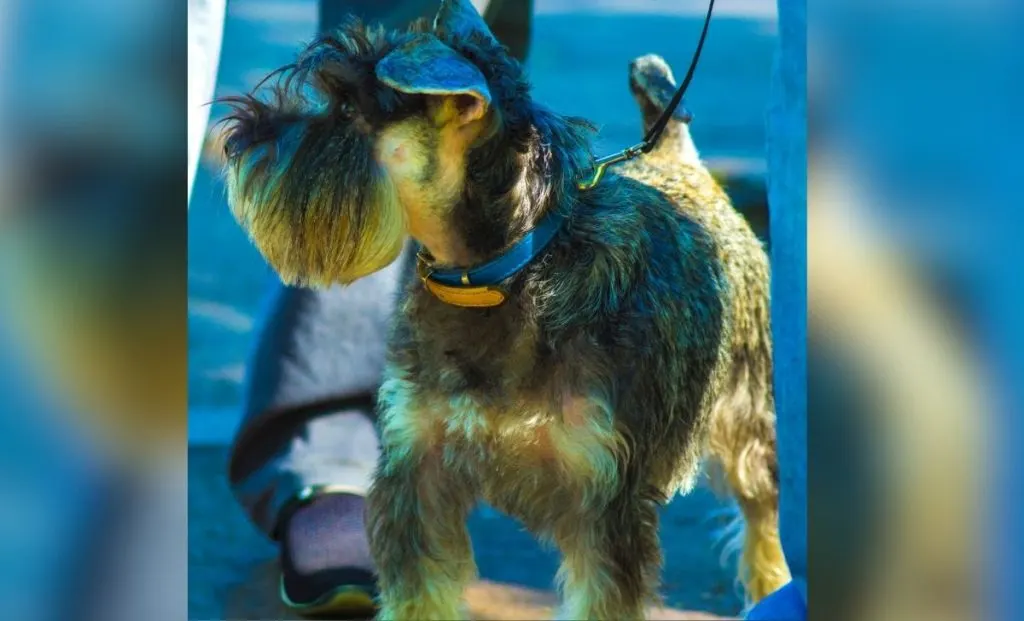
Black and tan Miniature Schnauzers perhaps make this breed’s most attractive variation with a stunning two-tone coat.
Black is the base color that covers the body, while classic tan, often called copper markings, highlights the eyebrows and runs deeply into the muzzle and the head and cheeks, chest, legs, and below the tail.
This type of coloring most definitely accents features that make this beautiful breed look noble and somewhat distinguished.
Their coat is wiry and dense, which is customary for the Schnauzer; therefore, regular grooming is needed to maintain the texture and vibrancy.
Genetics Behind Miniature Schnauzer Colors
This is complex because several genes act together on the coat color genetics of the Miniature Schnauzer.
For instance, the gene for agouti located in the A locus determines the extent of black and yellow pigments and thus patterns such as salt-and-pepper by the distribution of these pigments.
The brown gene in the B locus determines if a black or brown pigment is present and modifies colors such as black and liver.
The E locus for extension controls the black pigment, while the K locus for dominant black sets the overall coat pattern.
The dilution gene (D locus) dilutes the color of the coat to give lighter shades of the coat.
This further explains why studying these genetic factors becomes essential for breeders to achieve specific coat colors and patterning in their litters.
Buying A Miniature Schnauzer Based On Coat Color
The look and color can be a significant factor in why many prospective owners would choose a Miniature Schnauzer.
One might look for the classic salt-and-pepper or elegant black. In contrast, others might be attracted to a particolored or white Miniature Schnauzer because they look unique and very different.
It has to be kept in mind that the color of the coat should not be the only factor when selecting a dog. Temperament, health, and compatibility with the owner’s lifestyle take precedence.
Any potential owner should know the grooming required concerning the color variation among Miniature Schnauzers. For example, white Schnauzers may need more baths compared to their counterparts, black Schnauzers, to ensure that they stay clean.
Others may need frequent rubbing to make their furs shine. Talking to a reputable breeder and understanding a specified need for different coat colors can only lead to a happy, healthy relationship with your Miniature Schnauzer.
Health and Color Considerations
Some coat colors of Miniature Schnauzers mean the dog may be predisposed to particular health concerns.
For instance, merle Schnauzers can be prone to loss of hearing and sight, as they have a genetic mutation of the merle gene.
This can be treated through genetic testing, which must be done to prevent breeding dogs from such health risks.
On the other hand, liver Schnauzers would be more prone to certain types of
skin diseases and, as a result, need special care and regular check-ups at the vet.
A healthy diet, steady exercise, and good grooming are needed for all Miniature Schnauzers, regardless of color.
This will be part of their routine health screening and preventive additions to ensure that no health issue is left unnoticed or manifests later in life.
To Sum It All Up
Miniature Schnauzers are lovely dogs known for their different colored coats and beautiful personalities.
This is a very versatile and intelligent breed, and in very little time, it gained popularity far and wide from its working dog origin and found its niche in homes as loving pets.
These gorgeous pups can be found in various combinations, from the traditional salt and pepper to the classy black and silver, even the fascinating liver and merle patterns; each color brings its own charm and challenges.
Knowledge of the genetic nature that makes these colors, the grooming schedule that comes with them, and possible health considerations will assist prospective Miniature Schnauzer owners in making an informed choice.
Whatever you end up choosing, you can’t go wrong! We hope you are going to have many pawesome adventures with your pup!

Nandina has been a lifelong dog owner and enthusiast. She shared her home with multiple breeds, including Giant Schnauzers, Cane Corsos, and Huskies. Currently, she is raising a three-year-old rescue and a working-line German Shepherd puppy.
Actively engaged in IGP dog sports for two years, Nandina is a certified instructor for basic obedience and socialization. She works as a trainer in her local dog sports club, and in her spare time, she handicrafts biothane gear for dogs.
